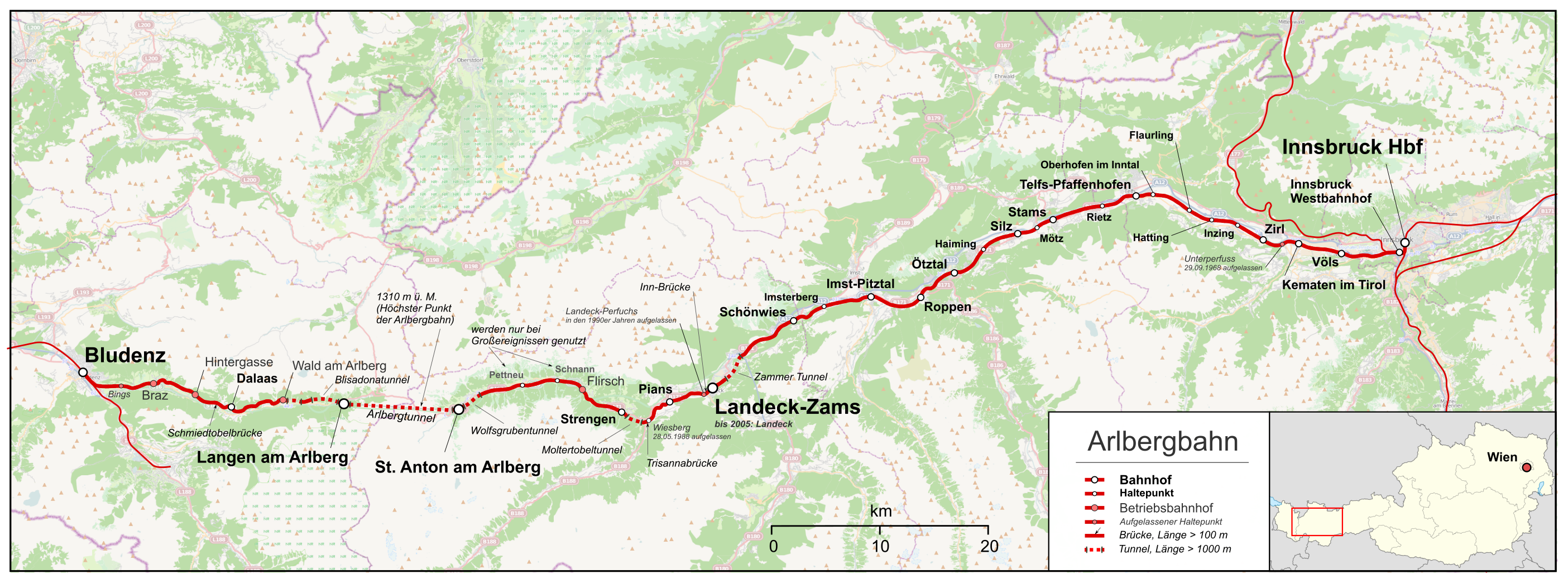|
Innsbruck Hbf
Innsbruck Hauptbahnhof (German language, German, 'Innsbruck Main Station' or 'Innsbruck Central Station') is the main railway station in Innsbruck, the capital city of the Austrian States of Austria, federal state of State of Tyrol, Tyrol. Opened in 1853, the station is a major hub for western and central Austria. In 2019, it was the 8th-busiest station in the country, and the 2nd-busiest outside of Vienna after only Linz Hauptbahnhof, with 315 train movements and 38,500 passengers daily. The station is owned and operated by ÖBB. It forms the junction of the Arlberg railway, Arlberg Railway to Bregenz, Brenner railway, Brenner Railway to Italy, Mittenwald Railway to Germany's region of Ällgau, Stubaitalbahn and the main east–west artery Lower Inn Valley Railway. Location Innsbruck Hauptbahnhof is located at Südtiroler Platz. It is at the southeastern side of the city centre and a 10-minute walk away. History The planning of a railway line in the region of Tyrol began in 1 ... [...More Info...] [...Related Items...] OR: [Wikipedia] [Google] [Baidu] |
Arlberg Railway
The Arlberg Railway (), which connects the Austrian cities Innsbruck and Bludenz, is Austria's only ''east-west'' mountain railway. It is one of the highest standard gauge railways in Europe and the second highest in Austria, after the Brenner. The 136.7 km line is a highly problematic mountain railway, in part because it is threatened by avalanches, mudslides, rockfalls and floods. It is operated by the Austrian Federal Railways (ÖBB) and frequented by international trains, including the Orient Express. History and construction As early as 1842 a railway over the Arlberg Pass was under discussion, as the British sought a rail connection for traffic from England to Egypt. Two years later, in 1847, Carl Ganahl - a textile industrialist from Feldkirch, Vorarlberg, Feldkirch - decided to privately support construction of the railway, despite the many technical challenges involved. On the other hand, the opening of the Semmering Railway in 1854 showed that mountain railwa ... [...More Info...] [...Related Items...] OR: [Wikipedia] [Google] [Baidu] |
Wörgl Hauptbahnhof
Wörgl Hauptbahnhof is the main railway station of Wörgl, a city in the Kufstein district of the Austrian federal state of Tyrol, about 20 km from the state border with Bavaria. It is a major hub for regional and international rail travel, both passenger and freight. Location Wörgl is located at the junction of two major rail lines. One is the former Lower Inn Valley Railway, designed by Alois Negrelli, the engineer who designed the Suez Canal, and opened in 1858. The route runs from Munich through Wörgl and Innsbruck to Verona. It was constructed by engineer Carl Ritter von Ghega, who also built the Semmering railway. The second is the electrified Western Railway, which runs from Vienna through Linz, Salzburg and Wörgl to Buchs, St. Gallen on the Swiss border. Some of its sections were once part of other lines: the Empress Elisabeth Railway from Vienna to Wörgl, the Salzburg-Tyrol Railway from Salzburg to Wörgl, and the Brixental Railway from Zell am See to W ... [...More Info...] [...Related Items...] OR: [Wikipedia] [Google] [Baidu] |
Innsbruck Hbf Vorplatz
Innsbruck (; ) is the capital of Tyrol and the fifth-largest city in Austria. On the River Inn, at its junction with the Wipp Valley, which provides access to the Brenner Pass to the south, it had a population of 132,493 in 2018. In the broad valley between high mountains, the so-called North Chain in the Karwendel Alps (Hafelekarspitze, ) to the north and Patscherkofel () and Serles () to the south, Innsbruck is an internationally renowned winter sports centre; it hosted the 1964 and 1976 Winter Olympics as well as the 1984 and 1988 Winter Paralympics. It also hosted the first Winter Youth Olympics in 2012 and is going to host the 2027 Winter Deaflympics. The name means "bridge over the Inn". History Antiquity The earliest traces suggest initial inhabitation in the early Stone Age. Surviving pre-Roman place names show that the area has been populated continuously. In the 4th century the Romans established the army station Veldidena (the name survives in today's urban ... [...More Info...] [...Related Items...] OR: [Wikipedia] [Google] [Baidu] |


